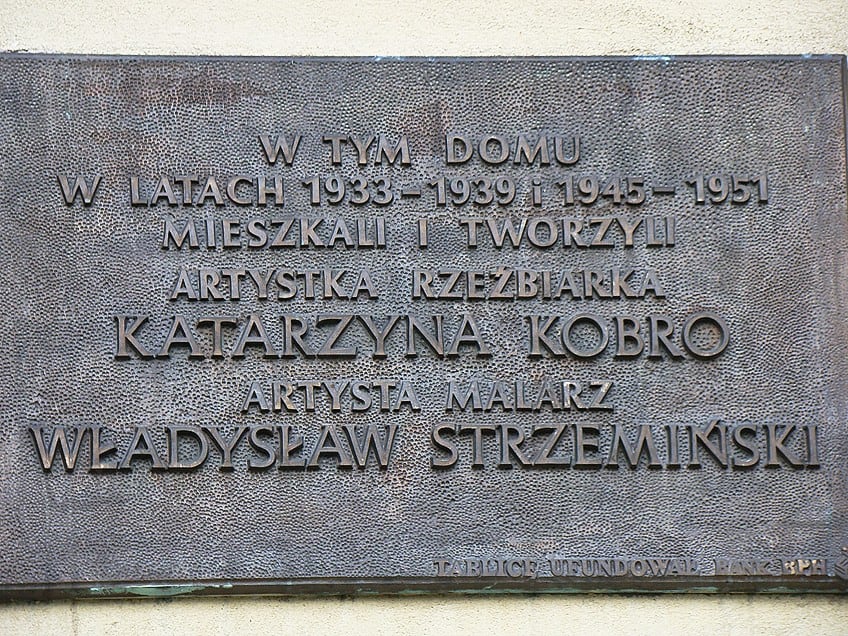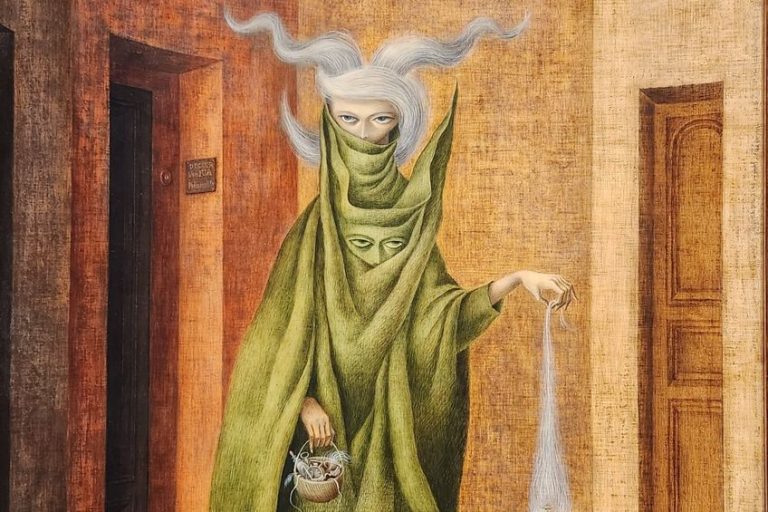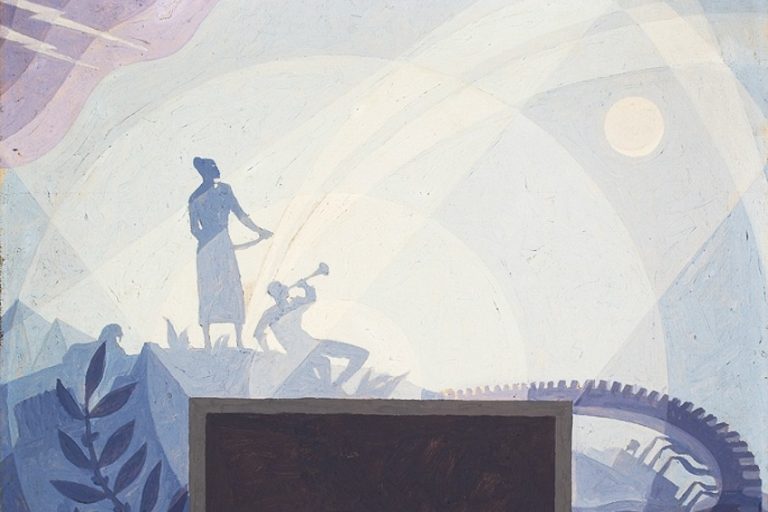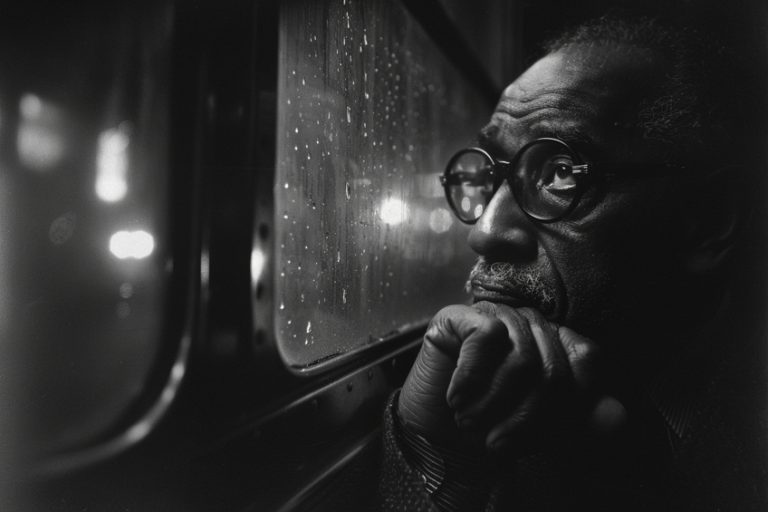Katarzyna Kobro – Explore This Avant-Garde Polish Sculptor
Who is Katarzyna Kobro? Avant-garde artist Katarzyna Kobro from Poland was a well-known figure in the country’s Constructivist movement. Katarzyna Kobro’s artworks defied Aestheticism and pushed for the use of rhythm in her spatial compositions, as well as the integration of scientific advancements into visual art. By mixing spatial composition, prefabricated parts, and commercial or goods into Katarzyna Kobro’s sculptures, she probed the notion of spatiality.
Katarzyna Kobro’s Biography
| Nationality | Polish |
| Date of Birth | 26 January 1898 |
| Date of Death | 21 February 1951 |
| Place of Birth | Moscow, Russia |
Even though hardly any of Katarzyna Kobro’s artworks have been preserved, they all have high aesthetic value. She was one of the most renowned female artists of the interwar era. Since so many of Katarzyna Kobro’s sculptures – primarily her early works – were destroyed and are only known via the iconographic record, it was necessary to recreate some of her artworks after her death to understand the breadth of her invention and bravery.
She was also amongst the most tragic individuals in Polish art history throughout the 20th century.
Childhood and Early Training
Katarzyna Kobro was of mixed ancestry; her mother was Russian and her father was from a German family that had settled in Latvia. Katarzyna received her education in Moscow but lived in Poland for much of her adult life. She studied at the 3rd Female Warsaw Gymnasium in high school, where her creative abilities were already visible, before being evacuated to Moscow. In high school, according to her daughter Nika Strzemiska, her mother started creating sculptures and drawings, initially in bread and subsequently in plaster.
She earned the best grades in art, manual labor, and natural science on her bachelor’s diploma, which she acquired in 1916.
Not all of Kobro’s life has been documented; most of it is still shrouded in mystery, necessitating some educated speculation to ascertain the truth. In a Moscow hospital in 1916, she most likely crossed paths with Wadysaw Strzemiski. She attended the Moscow School of Painting, Sculpture, and Architecture from 1917 to 1920, which had replaced the Academy of Fine Arts.

In 1918, she became a member of the Trade Union of Painters of the City of Moscow, an association of left-leaning painters that included featured Olga Rozanova, Kazimir Malevich, Vladimir Tatlin, and Alexander Rodchenko, all of whom are likely to have had an impact on Katarzyna Kobro’s artworks. Kobro relocated to Smolensk during her third year of study, where she worked several odd jobs. Her other sister, Maria, remained in Moscow while her mother, father, and sister Viera all relocated to Riga at the same time.
Her friendship with Strzemiski grew at this time, and in 1920, she married the artist. Both were involved in the era’s cultural scene; they oversaw a UNOVIS branch, kept in touch with people like Malevich and Eliezer Lisicki, and most likely worked on establishing the new standards for Russian culture and art.
Their workshop was regarded as being “a spectrum of constructivism,” and they were seen as an example of “radical communist ideas.”
Early Career
Though it has since become lost and all that is left of it is a photograph, Kobro made her first sculpture in 1920. The piece was titled Tos 75 – Structure and combined futuristic and cubist components with a dynamic collage of pre-made wood, metal, glass, and cork pieces.
Between 1921 and 1922, Kobro most likely produced two other works in Smolensk; both of these lost pieces were later rebuilt by Janusz Zagrodzki, the first artist to document her body of work, and are now referred to as Hanging Constructions.
The first one has to do with Rodchenko’s spatial realizations and Malevich’s suprematism theory. The artwork, which was made of an elliptical shape joined by a wooden cube, a metal rod, and an adjacent cuboid, seemed to defy gravity.
The largest piece, a massive oval form, was positioned in the upper section of the structure; nevertheless, it is impossible to analyze the construction as a unit because the image that has survived cannot reveal the specific materials that were utilized for each component.
According to Janusz Zagrodzki, the second sculpture had a distinct character and was constructed from prefabricated parts. According to the author: “The relationship between the many shapes was not permanent, and the pressure and tremors of the steel sections produced new dynamic effects, giving the sculpture’s components the appearance of being always in motion.” But simultaneously, “The artist positioned symbolic signals, the proto-forms of suprematism—the circle and the cross—in the area bounded by a dynamic, twisting hoop form full of inner energy.”
Middle Career
Katarzyna Kobro and Strzemiski fled Russia after having their first creative experiences to flee the growing panic; they most likely departed before the turn of the 20th century and entered Poland through an unauthorized border crossing. Both of them were residing with Strzemiski’s family in Vilnius in 1922, but Kobro soon went to join her family in Riga on her own. At that point, Strzemiski started to actively promote his wife’s work in Poland along with other things.
Along with Henryk Staewski, Henryk Berlewi, Mieczysaw Szczuka, Teresa Arnowerówna, and, of course, Strzemiski himself, Kobro was a member of the Blok group in 1924, a collection of avant-garde painters mostly from Warsaw.
Two images of Kobro’s sculptures were published in the group’s magazine, “Blok.” To let Kobro travel back to Poland, the couple married in a church in Riga that same year. During his brief visit to Latvia, Strzemiski established contact with several local artists.

As a consequence, that winter, Blok was able to display the works of its members at the Riga Museum, and Kobro displayed the unidentified Constructions constructed of glass and metal sheets. When they returned to Poland, the couple initially resided in Szczekociny before relocating to Brzeziny near ód, Katowice, and eventually Koluszki while Strzemiski attempted to make a life by teaching art.
Strzemiski departed Blok around the end of 1924, and Kobro most likely followed him. The next year, she produced two significant sculptures, “Spatial Composition” and “Spatial Sculpture”, both of which have been partially restored today.
Both pieces included the artist’s expressive abstract forms and geometric shapes, which would later serve as the inspiration for some of her most notable creations. She was related to architects who participated in the Praesens group, who subsequently joined the group in 1926, via their search for a “global vision of creating space,” although at the time her work was not well known outside of her own creative circles.
In 1926, the Zachta Gallery in Warsaw hosted her sculptures for the first time in Poland as a component of a larger Praesens display. Critics did not appreciate them because they believed that a sculpture should be composed of a solid mass and did not agree with Kobro’s interpretation of spatiality.
Strzemiski, who was persuaded of the exceptionality of Kobro’s skill, made up for the reviewers’ lack of benevolence. He insisted that her creative contributions be given more consideration and that they be fairly assessed.
Strzemiski himself, for instance, remarked to Julian Przybo that Kobro’s plaster Nudes are “near” to some of August Zamoyski’s creations, “but superior.” One of the reviewers claimed that Kobro was displaying “furniture” during the 1928 Modernists’ Salon show at Warsaw’s Trade Unions of the Artists; Strzemiski responded, “Was it really so hard to understand in the program that this was not furniture but spatial sculptures?”
Later Career
It is unknown if Kobro produced any new works during the years before World War II, which were mostly devoted to housekeeping and child care. Throughout the war, the family was constantly on the road. When the Strzemiskis returned to Łódź in 1940, they discovered that the art they had left in the basement of their pre-war flat had been destroyed by the people who had lived there before them.
Kobro was the main target of this “cleaning,” and she was only able to locate a few of her paintings on a pile of trash.
Later, in 1945, she burned several of her wooden carvings herself to provide food for her daughter, who was starving. Kobro’s life after the war was increasingly unstable. Strzemiski tried to take away her right to care for their daughter, but he was unsuccessful. She was charged with “straying from the Polish nationality,” given a six-month prison sentence, and only got out after an appeal. Additionally, she had a terrible illness that would ultimately result in her death.

The Nudes from 1948 and the Siemiatycze crayon landscapes are examples of her later works. The sculpture by Kobro is supported by Akty. Janusz Zagrodzki contrasts them with her 1920s work, Akty, highlighting the more powerful expressiveness, monumentality, and dynamics of her more recent paintings.
He calls attention to their formal complexity and elaboration, which are products of the daring human body distortion. However, he also emphasizes their sensuality, which was a feature of her earlier works as well, even though the later sculptures are more condensed, simpler, and “nearly Classical.”
After 1945, people continued to mistrust Kobro’s work in the same way they had in the interwar years. She stayed under Strzemiski’s career shadow for a long time.

This was especially clear at the first Kobro and Strzemiski post-war exhibition, which took place in Łódź and Warsaw at the turn of 1956. Kobro’s theories on how sculpture and time coexisted, which were completely illustrated for the first time in the 1973 Polish Constructivism exhibition, could finally be put back together.
This led to an increase in interest in Kobro’s work, particularly among critics involved in the “revision” of the constructivist heritage who were affiliated with conceptual art and minimalism.
Then, during the 1980s and 1990s, things started to shift. The artist’s biography (or rather, the histories of the two artists, Kobro and Strzemiski) piqued the curiosity of critics and academics, inspiring a feminist interpretation of her life and work in addition to several other interpretations. In addition, several exhibits, particularly international ones, started to include Kobro’s work in the 1980s and 1990s.
Art Style
Between those early pieces and the later ones, a complicated route can be seen, one that shows the artist’s developing social and artistic consciousness. Like Strzemiski, Kobro’s aesthetic theories included not just the artwork itself but also art’s existence and purpose outside of the realm of the creative.
https://www.youtube.com/watch?v=Vzz0WmvmFlE
In suprematism, “the backdrop is a constructively passive aspect,” according to Strzemiski, but he was interested in “the total communion of backdrop and form in one original whole,” or “post-suprematism.” Similar in thought was Kobro, whose goal was to “construct space.” The distinction between “pure” and “applied” art was rejected by both.
Kobro had little interest in intuitive or visionary work and put her faith largely in the rigorousness of logic and math.
Famous Artwork of Katarzyna Kobro
| Artwork Title | Year | Genre |
| Rzeźba Abstrakcyjna I | 1924 | Sculpture |
| Rzeźba Abstrakcyjna II | 1924 | Sculpture |
| Rzeźba Przestrzenna | 1925 | Sculpture |
| Kompozycja Przestrzenna I | 1925 | Sculpture |
| Sculpture Spatiale | 1928 | Sculpture |
| Spatial Composition Nr. 4 | 1928 | Sculpture |
| Spatial Composition Nr. 2 | 1928 | Sculpture |
| Spatial Composition Nr. 6 | 1931 | Sculpture |
| Spatial Composition Nr. 9 | 1933 | Sculpture |
Recommended Reading
In this article, we explored Katarzyna Kobro’s sculptures as well as Katarzyna Kobro’s biography. There is still much more to discover about this avant-garde artist. Here are a few books that will teach you even more about her spatial compositions and art style.
Composing the Space: Sculptures in the Avant-Garde (2020) by Malgorzata Jedrzejczyk
This book examines how avant-garde sculpture engages with multiple concepts of space, motion, and the human body. It is partially inspired by the issues of Polish artist Katarzyna Kobro. Kobro’s aesthetic attempts are discussed in relation to analogous sculptural endeavors by artists like El Lissitzky and Friedrich Kiesler. Kobro believed that a properly planned and coordinated series of plastic rhythms that emerge in both time and space should be used to balance the vibrancy of our motor skills.
- Illustrated anthology of key statements on modernist sculpture
- Looks at avant-garde sculpture’s dialogues
- Includes critical commentary
On the eve of the revolution of 1917, Katarzyna Kobro studied sculpting at the Moscow School of Art and Architecture. She relocated to Smolensk in 1920 and became a part of the artistic circle that surrounded Kazimir Malevich. She created theater sets and posters while there and taught sculpting at the School of Ceramics. She founded the local chapter of UNOVIS, a collective of Russian artists, with her husband, the painter Wadysaw Strzemiski. Kobro will most be remembered for how she investigated many ideas about space, movement, and the human body which were incorporated into avant-garde sculpture.
Take a look at our Katarzyna Kobro art webstory here!
Frequently Asked Questions
Who Is Katarzyna Kobro?
Katarzyna Kobro, a well-known figure in Poland’s Constructivist movement, was an avant-garde artist. Katarzyna Kobro’s artworks resisted Aestheticism by incorporating rhythm into her spatial designs and incorporating scientific advances into visual art. Katarzyna Kobro’s sculptures explored the concept of spatiality by using spatial composition, prefabricated pieces, and commerce or commodities.
What Is Katarzyna Kobro’s Gender?
Are you wondering about Katarzyna Kobro’s gender? Katarzyna Kobro, one of the finest sculptors of all time, is assumed to be transgender. She was never discovered to be an individual of different sex or transgender, as changing gender was not conceivable in the 1950s. Although the origins of the rumor are unknown, where did it begin? The reason might be her facial expression, which appears to be quite similar to that of a male.
Which Art Movement did Katarzyna Kobro Belong to?
Katarzyna Kobro belonged to the art movements of Constructivism and Concrete Art. She was an important representative of these movements and advocated an art based on geometric forms and abstract patterns, free from any symbolism or reference to the visible world.
When was Katarzyna Kobro Born?
Katarzyna Kobro was born in Moscow, Russia, on October 26, 1898. She grew up in a family of Polish origin and attended schools in various countries, including Poland.
How did Katarzyna Kobro Die?
Katarzyna Kobro died on February 21, 1951, in Lodz, Poland, at the age of 52. The exact cause of death is not known, but it is reported that she suffered from a serious illness that affected her heart. Some sources speculate that it may have been rheumatic heart disease.
Isabella studied at the University of Cape Town in South Africa and graduated with a Bachelor of Arts majoring in English Literature & Language and Psychology. Throughout her undergraduate years, she took Art History as an additional subject and absolutely loved it. Building on from her art history knowledge that began in high school, art has always been a particular area of fascination for her. From learning about artworks previously unknown to her, or sharpening her existing understanding of specific works, the ability to continue learning within this interesting sphere excites her greatly.
Her focal points of interest in art history encompass profiling specific artists and art movements, as it is these areas where she is able to really dig deep into the rich narrative of the art world. Additionally, she particularly enjoys exploring the different artistic styles of the 20th century, as well as the important impact that female artists have had on the development of art history.
Learn more about Isabella Meyer and the Art in Context Team.
Cite this Article
Isabella, Meyer, “Katarzyna Kobro – Explore This Avant-Garde Polish Sculptor.” Art in Context. July 1, 2022. URL: https://artincontext.org/katarzyna-kobro/
Meyer, I. (2022, 1 July). Katarzyna Kobro – Explore This Avant-Garde Polish Sculptor. Art in Context. https://artincontext.org/katarzyna-kobro/
Meyer, Isabella. “Katarzyna Kobro – Explore This Avant-Garde Polish Sculptor.” Art in Context, July 1, 2022. https://artincontext.org/katarzyna-kobro/.












